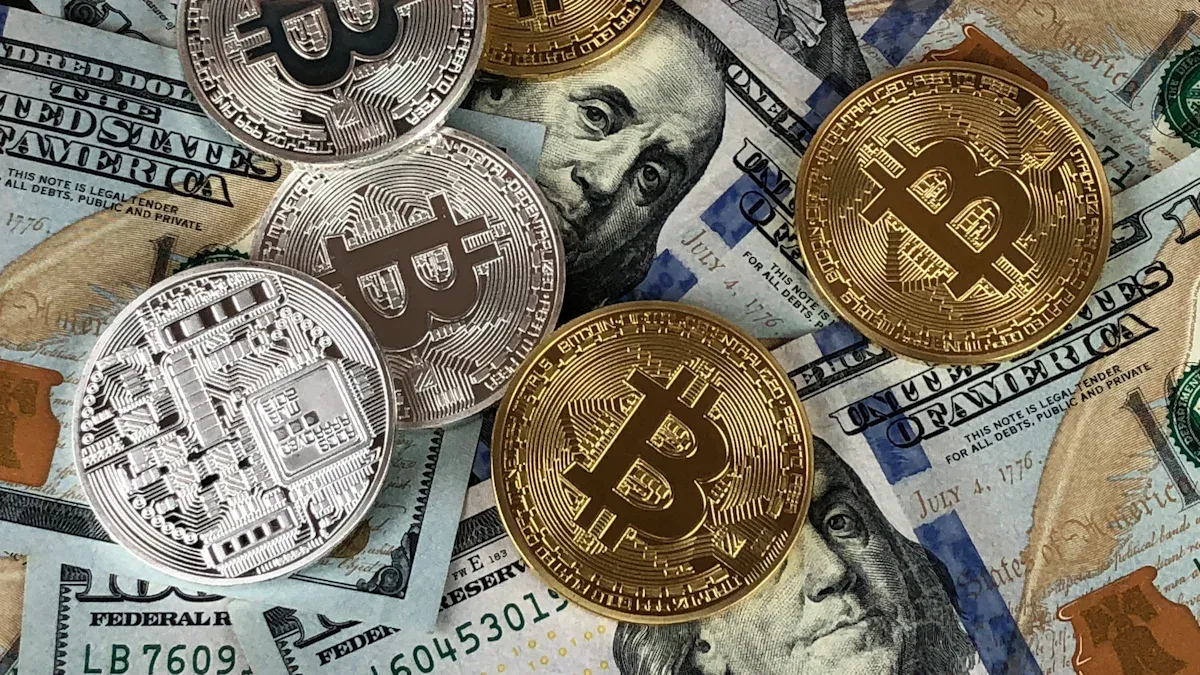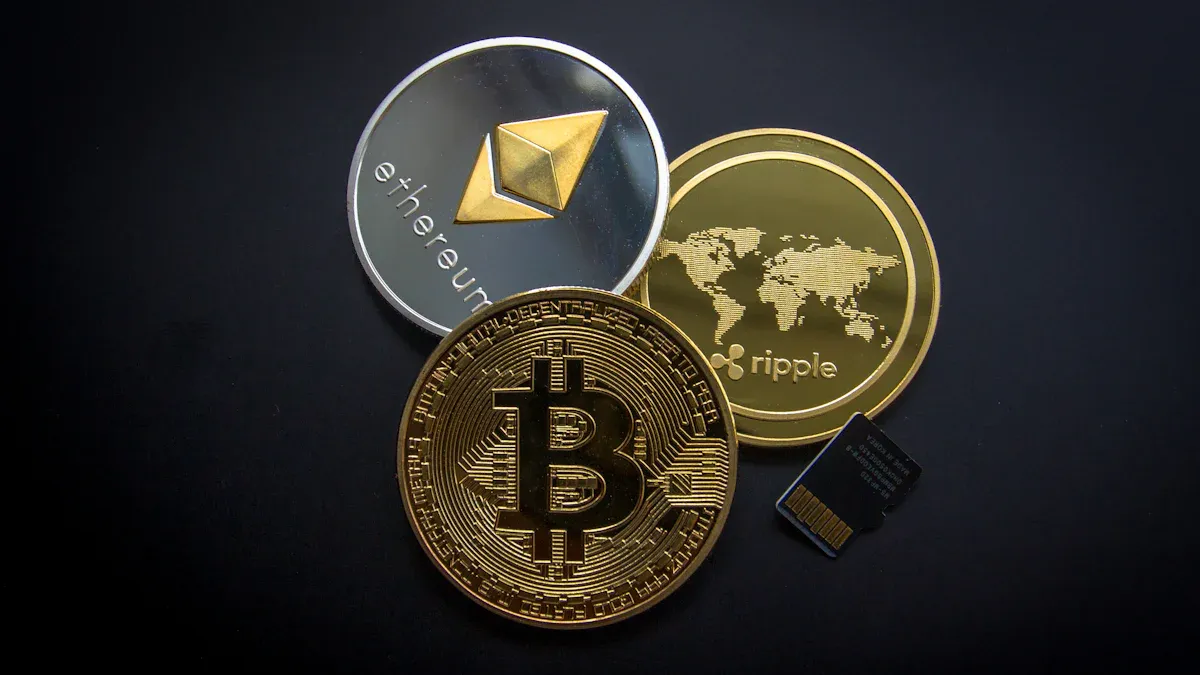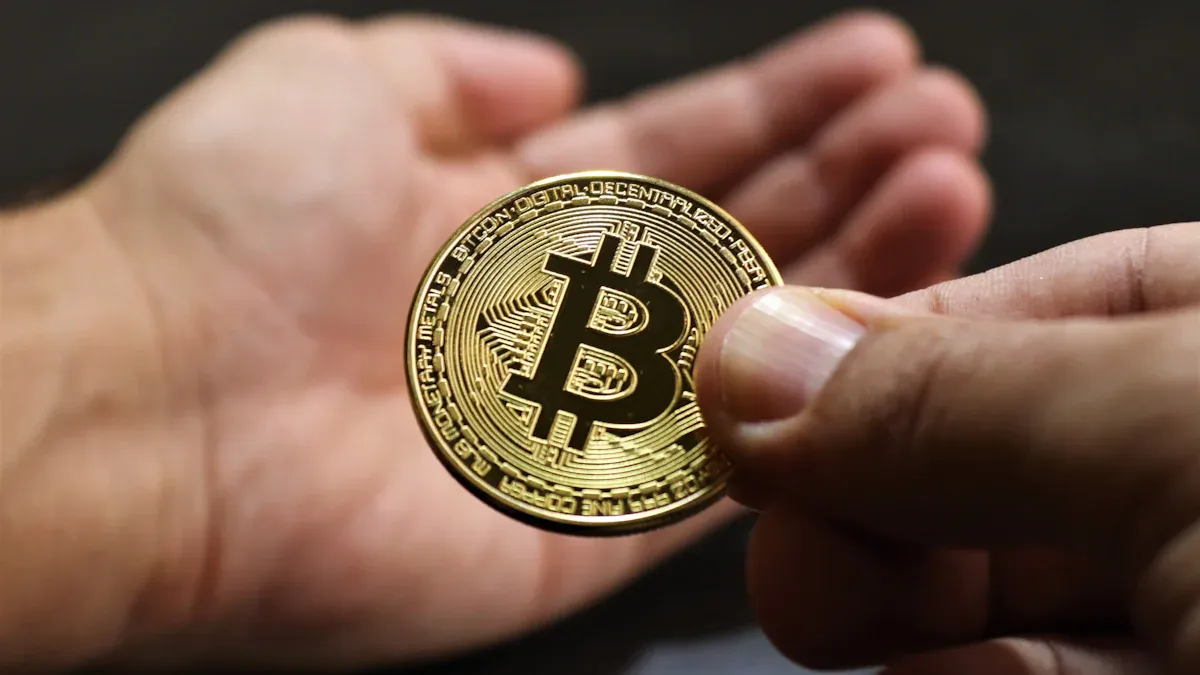- EasyCard
- Trade
- Help
- Announcement
- Academy
- SWIFT Code
- Iban Number
- Referral
- Customer Service
- Blog
- Creator
Is Zero-Fee USDT International Transfer Really Possible? A Comprehensive Guide

Image Source: pexels
Zero-fee USDT international transfers are entirely possible under specific conditions.
This is not an unconditional “free lunch.”
You mainly achieve it through two approaches: using network fee subsidies provided by specific wallets or leveraging an exchange’s internal transfer system. These methods make efficient stablecoin international payments more attractive, but understanding the underlying rules is crucial.
Key Points
- Zero-fee USDT international transfers are possible, primarily through wallet subsidies or exchange internal transfers.
- USDT transfers are faster and cheaper than traditional wire transfers because they occur directly on the blockchain.
- Choosing the TRC20 or BEP20 network can significantly reduce USDT transfer fees.
- Free transfer methods usually have limits on frequency, platform, or amount—understand them clearly before use.
- Protecting your private keys and seed phrases is extremely important—this is the key to ensuring USDT asset security.
Why USDT Transfers Require Fees

Image Source: pexels
When you perform a USDT transfer, you are actually requesting a public blockchain network (such as Ethereum or TRON) to process and record the transaction. This process consumes computational resources, and the fee is what you pay for those resources.
Understanding Blockchain Network Fees (Gas Fee)
You can think of the network fee (Gas Fee) as “fuel” or “toll” in the blockchain world. It is not paid to the USDT issuer but to the validators (or miners) who maintain the network’s secure operation, incentivizing them to include your transaction in a block.
Your total fee is roughly determined by the formula:
Total Fee = (Base Fee + Priority Fee) x Gas Units Consumed
- Base Fee: The fixed portion set by the network based on current congestion.
- Priority Fee: The extra tip you pay to incentivize validators to process your transaction faster.
Network fees are not fixed. They fluctuate due to several factors:
- Network Congestion: When many people initiate transactions simultaneously, like rush hour traffic, fees rise.
- Transaction Complexity: Simple transfers require fewer computational resources than executing complex smart contracts, resulting in lower fees.
- Transaction Priority: If you want faster confirmation, you can pay a higher priority fee to “cut in line.”
Mainstream Network Fee Comparison
Choosing different blockchain networks for USDT transfers results in vastly different costs and wait times. Currently, the most mainstream options are USDT on Ethereum (ERC20), TRON (TRC20), and Binance Smart Chain (BEP20).
The table below clearly shows their differences:
| Network | Token Standard | Average Fee (USD) | Estimated Arrival Time |
|---|---|---|---|
| Ethereum | ERC-20 | ~$1.15 | 5-10 minutes |
| TRON | TRC-20 | ~$0.31 | Less than 1 minute |
| BSC | BEP-20 | ~$0.05 | 1-2 minutes |
From the comparison, you can see that TRC20 and BEP20 networks have huge advantages in cost and speed. An ERC20 transfer can cost over 20 times more than BEP20 and arrive slower, especially during network congestion. Therefore, choosing a low-cost, high-efficiency network is the first step to saving fees.
Stablecoin International Payments: Why Superior to Traditional Wire Transfers?
When you need to transfer money to overseas business partners or family, besides traditional wire transfers, you now have a better option: stablecoin international payments. They demonstrate significant advantages in cost, speed, and convenience, completely changing the rules of cross-border fund flows.
Cost and Efficiency Advantages
The cost structure of traditional international wire transfers is complex and opaque. You not only pay fixed fees charged by the bank but may also face a series of hidden charges.
A seemingly simple international remittance may hide these fees:
- Sending Fee: Fixed or percentage-based fee charged by the bank or provider.
- CurrencyExchange Fee: Banks typically use marked-up exchange rates, causing you to lose a portion of funds during conversion.
- Intermediary Bank Fee: As funds pass through countries, each intermediary bank may charge $10 to $100.
- Hidden Costs: The most common is unfavorable exchange rates. Bank rates may be 3% to 5% worse than the true market rate, causing you to pay more unknowingly.
In contrast, stablecoin transfer costs are very clear. You only pay a low blockchain network fee, usually between $0.05 and $1, depending on the chosen network. No intermediary banks, no exchange rate losses—all costs are transparent.
T+0 Instant Settlement
Time is money, especially in business dealings. The traditional SWIFT wire transfer system typically takes 1-3 business days to complete settlement, and it fully depends on banking hours, with no processing on weekends or holidays.
Stablecoin international payments achieve true “T+0” instant settlement. This means your funds can reach the recipient anywhere in the world within minutes.
| Feature | Traditional Wire (SWIFT) | Stablecoin Transfer |
|---|---|---|
| Settlement Time | 1-3 business days | Within minutes |
| Operating Hours | Banking hours only | 24/7/365 |
| Fee Percentage (for $50,000) | 2.2% - 4.3% | Less than 0.1% |
This “always online” feature means you are no longer limited by bank hours or holidays. Whether at midnight on Sunday or during a public holiday, you can initiate and receive payments anytime, ensuring fund liquidity and uninterrupted business operations.
Three Methods to Achieve Zero-Fee USDT Transfers
You now understand why USDT transfers require fees and their significant advantages over traditional wire transfers. Now, let’s dive into the core: how to truly achieve zero-fee transfers. The following three methods offer options from beginner to advanced.
Method 1: Use Wallet App Subsidies
The most direct zero-fee method is to use wallet apps that provide network fee subsidies. These wallets actively cover the Gas fees generated during transfers to attract and retain users. You don’t need complex operations—just use their app.
It’s like using a ride-hailing app’s “no starting fare” coupon—the platform pays for you.
TokenPocket is a typical example. It provides daily transfer subsidies for TRON network users.
- Subsidies can cover up to 100% of network fees, enabling zero-cost transfers.
- Daily subsidy limit is for 1,500 users, first-come, first-served.
- Each user can claim up to 15 times per month.
Bitget Wallet (formerly BitKeep) also offers a similar service called “GetGas”.
- Your first USDT transfer on the TRON network using Bitget Wallet is completely Gas-free.
- Subsequent transfers enjoy 50% Gas fee discounts.
Additionally, wallets like Trust Wallet offer the “FlexGas” feature. Though not completely free, it greatly enhances convenience. You don’t need to hold native tokens of BSC or Ethereum (like BNB or ETH)—you can pay Gas fees directly with USDT. This saves you the hassle of buying and managing multiple small tokens.
This method is ideal for users with infrequent transfers. Simply download the designated wallet app to easily enjoy free or discounted transfer experiences.
Method 2: Via Exchange Internal Transfers
If your recipient uses the same cryptocurrency exchange as you (e.g., Binance, Kraken), you can use the “internal transfer” feature for zero-fee, instant arrival.
The principle is simple. Funds do not actually move on the blockchain—only a ledger entry occurs in the exchange’s internal database.
It’s like you and a friend both having accounts at the same licensed Hong Kong bank. When you transfer to them, the bank simply moves the number from your account to theirs within its system—funds never leave the bank, so it’s instant and free.
When withdrawing from one Binance account to another, the system automatically recognizes and marks it as an “internal transfer.” The process:
- You initiate a withdrawal, entering the recipient’s Binance account address or ID.
- The transaction is marked as “internal transfer.”
- Funds arrive in the recipient’s account within seconds.
- You pay no network fees.
You might worry about exchange withdrawal limits. In reality, for most compliant exchanges, even basic verification levels have high daily and monthly withdrawal limits, sufficient for most business and personal needs. Take Kraken as an example:
| Account Level | Daily Withdrawal Limit (USD) | Monthly Withdrawal Limit (USD) |
|---|---|---|
| Intermediate | $500,000 | $15,000,000 |
| Pro | $10,000,000 | Unlimited |
For business partners or teams needing frequent large stablecoin international payments, agreeing to use the same mainstream exchange for settlement is undoubtedly the most efficient and cost-effective choice.
Method 3: Stake Network Resources for Free Transfers
This is a more advanced method, suitable for “professional” users with very high transfer frequency who want to fundamentally solve fee issues. It mainly applies to public chains like TRON that allow users to stake native tokens for network resources.
On the TRON network, transferring USDT consumes “Energy” and “Bandwidth.” You can obtain these resources for free by “freezing” (staking) TRON’s native token TRX.
A TRC20-USDT transfer requires approximately 32,000 to 70,000 units of energy. By freezing TRX, you gain a fixed daily energy quota. As long as your TRX remains frozen, consumed energy replenishes daily.
| Daily Energy Needed (Units) | Approximate TRX to Freeze |
|---|---|
| 32,000 | 2,300 |
| 70,000 | 5,000 |
This means a one-time investment and freeze of about 2,300 to 5,000 TRX can provide at least one free USDT transfer per day. For users with daily transfer needs, this is a highly cost-effective long-term investment.
Note: Frozen TRX typically has a 14-day lock-up period, during which you cannot sell or transfer those assets. Thus, this method suits users willing to hold TRX long-term.
The process is simple—you can find the “stake” or “freeze” function in TRON-supported wallets like TronLink or Trust Wallet and choose to freeze for “energy.”
While networks like Polygon also significantly reduce fees via Proof-of-Stake (PoS), TRON’s “stake-for-resources” model provides a more direct, quantifiable path to daily free transfers.
The Truth and Risks Behind “Zero Fees”

Image Source: pexels
While enjoying the convenience of zero fees, you must clearly recognize that these “free lunches” come with conditions. Understanding their limitations, costs, and risks helps you use USDT more safely and wisely.
Understand the Limitations of “Free”
There is no absolute free. The zero-fee methods you use typically come with clear restrictions.
You need to carefully read and understand these rules to avoid obstacles at critical moments.
- Frequency and Amount Limits: Wallet app subsidies usually have daily or monthly usage caps, e.g., 15 times per month. Exchange internal transfers are free but subject to your account’s daily or monthly withdrawal limits.
- Network and Platform Limits: Free methods often apply only to specific networks (like TRON) or platforms (both parties on Binance).
- Amount Limits: Some services may have minimum transfer amounts. For example, direct USDT transfers to Telegram contacts have a minimum of 0.01 USDT.
- Time Cost: The TRX staking method for free transfers requires locking assets for at least 14 days.
Beware of Hidden Costs and Security Risks
“Zero transfer fees” does not mean the entire process is free. When buying or selling USDT to convert to fiat, platforms or providers still charge trading fees or spreads.
More importantly, security risks. The crypto world is full of traps aiming to steal your assets.
A core principle is: “Not your keys, not your coins.”
You need to beware of these scams:
- Phishing: Scammers impersonate official support, luring you via email or DM to fake websites and asking for your seed phrase to “verify your wallet,” stealing all your assets.
- Fake Apps: Malicious apps disguise as legitimate crypto wallets to steal your private keys or login credentials.
Thus, choosing a wallet is crucial. You need to understand the fundamental difference between custodial and non-custodial wallets:
| Feature | Custodial Wallet (e.g., exchange account) | Non-Custodial Wallet (e.g., TokenPocket) |
|---|---|---|
| Private Key Control | Controlled by provider | Fully controlled by you |
| Asset Security | Depends on provider’s security | Your responsibility, no third-party risk |
| Recovery Method | Recoverable via support | Lose seed phrase = permanent asset loss |
Using a non-custodial wallet means absolute ownership of assets but requires you to fully shoulder private key custody responsibility.
Backup Plan: Choose Low-Cost Networks
When free methods’ limits don’t meet your needs, the best backup strategy is to choose a sufficiently low-fee network. Besides TRC20 and BEP20 mentioned earlier, Ethereum’s Layer-2 scaling networks also offer highly attractive options.
These networks batch transactions for unified processing, drastically reducing per-transaction costs.
- Base: One of the fastest and lowest-fee stablecoin solutions in the current mainstream L2 ecosystem.
- Arbitrum & Optimism: Both provide highly competitive low fees, especially suitable for high-frequency or large transactions.
Although Polygon network fees (about 1.48 USDT) are relatively higher, it remains far more economical than Ethereum mainnet. Skillfully using these low-cost networks provides the most reliable and economical guarantee for your daily stablecoin international payments.
Zero-fee USDT transfers are indeed feasible. You mainly achieve this through wallet subsidies and exchange internal transfers—this is precisely the superiority of stablecoin international payments, with the market size projected to reach $2 trillion by 2028.
But you must be clear that these “free” methods have limitations. More importantly, always prioritize asset security, such as backing up seed phrases offline in non-digital form.
For high-frequency or unlimited transfer needs, skillfully choosing low-cost networks like TRC20 or BEP20 is currently the most reliable and economical strategy.
FAQ
Which zero-fee method should I choose?
It depends on your transfer frequency.
- Occasional Transfers: Wallet app daily subsidies are most convenient.
- Fixed Partners: Agree with the recipient to use the same exchange—internal transfers are most efficient.
- High-Frequency Users: Staking TRX for free energy is the most economical long-term choice.
What if USDT is sent to the wrong network?
Your assets are likely permanently lost. Different networks have incompatible address formats, and funds cannot be directly transferred across networks. Your only hope is to contact the receiving platform’s support, but recovery is not guaranteed.
Important Reminder: Before transferring, you must repeatedly confirm that the recipient address and network selection completely match.
Are there other stablecoins besides USDT?
Of course. The market has many mainstream stablecoins pegged 1:1 to the USD, such as USDC (USD Coin) and DAI. They are also widely used for international payments and trading—you can find them on different blockchain networks and choose based on preference.
How to securely store my USDT?
The core principle is to personally safeguard your private key or seed phrase. You should use a reputable non-custodial wallet and back up the seed phrase physically (e.g., handwritten on paper) offline. Never disclose your private key information to anyone on any website or via chat tools.
*This article is provided for general information purposes and does not constitute legal, tax or other professional advice from BiyaPay or its subsidiaries and its affiliates, and it is not intended as a substitute for obtaining advice from a financial advisor or any other professional.
We make no representations, warranties or warranties, express or implied, as to the accuracy, completeness or timeliness of the contents of this publication.




Contact Us
Company and Team
BiyaPay Products
Customer Services
is a broker-dealer registered with the U.S. Securities and Exchange Commission (SEC) (No.: 802-127417), member of the Financial Industry Regulatory Authority (FINRA) (CRD: 325027), member of the Securities Investor Protection Corporation (SIPC), and regulated by FINRA and SEC.
registered with the US Financial Crimes Enforcement Network (FinCEN), as a Money Services Business (MSB), registration number: 31000218637349, and regulated by FinCEN.
registered as Financial Service Provider (FSP number: FSP1007221) in New Zealand, and is a member of the Financial Dispute Resolution Scheme, a New Zealand independent dispute resolution service provider.




















